Black Onyx
Onyx is the most traditional black gemstone
Onyx is used for protection and also as defence against negativity consciously directed towards you. It has also been used to reduce uncontrollable sexual impulses. In India, Gemmologists recommend Onyx as a protective measure for harmonious relationships.


THE ORIGIN OF BIRTHSTONES
The origin of Birthstone in the Western world is is believed to have dated back to the breastplate of Aaron, which contained 12 gemstones representing the 12 tribes of Israel. However, age-old cultures like the Hindus are known to have assigned birthstones over a thousand years before. Surprisingly, there is not a huge difference between the stones assigned across cultures, which makes one wonder that there is perhaps some true science behind it. The differences in stones arise mainly from the differences in the astronomical calendar calculations.
In 1912 the then American National Association of Jewelers, now called Jewelers of America met in Kansas and officially adopted a Birthstone list which has since been popularly followed by the English speaking world.
There are numerous stories about the healing power of stones and their therapeutic benefits.
It is believed that wearing a gemstone assigned to a specific month heightens its healing powers for the wearer.
The good news is that unlike popular belief, you don’t have to limit yourself to just wearing your birthstone, in fact its all the better if you wore the stone assigned to each month!

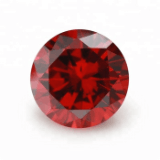
GARNET
Colour: Garnet is typically a burgundy colour but is also available in other colours from golden yellow to intense green, depending on its country of origin.
Symbolism: Garnet symbolizes loyalty, constancy and truth, which is why it makes a great gift for the person you trust. It is also said to have guiding properties, keeping a wearer safe during travels.
Source: The most beautiful and vibrant violet red garnets comes from Sri Lanka, while the rare and intensely green Tsavorite Garnet comes from Tsavo National Park in Tanzania. The bright gold to burnished yellow-brown Hessonite Garnet can be found in Canada. India, Sri-Lanka and Africa are the most important sources of Garnets today.
Properties: Garnet is a durable stone and is low maintenance. It is versatile and strong and equally popular in men’s jewellery.
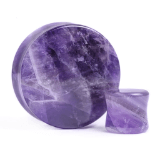
AMETHYST
Amethyst is the birthstone for February and is the accepted anniversary gemstones for the 6th year of marriage.
Colour: The stone comes in a spectacular purple colour and ranges from a lovely blend of deep violet to red to a lighter hue of lilac. Ideally it is a deep medium purple with rose-coloured flashes that gives Amethyst its beauty and fire.
Symbolism: Amethyst is the most precious member of the Quartz family and has long been curated by Royalty and religious figures because of its rich, royal colour. Amethyst is said to strengthen relationships and give it’s wearer courage. It symbolizes peace, protections and tranquility. The ancient Greeks believed that the stone protected the wearer from intoxication and enabled them to keep sober. Infact the word Amethyst comes from Anethystos, a Greek word meaning “sober”.
Source: Amethyst is found all over the world, but its most important source is Brazil, Uruguay and Zambia.
Properties: Amethyst is a durable stone and requires no special care. However, their surface polish can be eroded by rough wear or abrasions more easily than other gems.
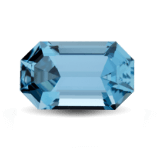
AQUAMARINE
Aquamarine is the birthstone for March and is the accepted anniversary gemstone for the 19th year of marriage.
Colour: It derives its name from the Latin word meaning “seawater” and its mesmerizing colour ranges from pale to deep blue. Stones with a clear blue colour without any shades of green or gray spots are considered ideal. Most gems mined today are a pale watery blue. The most intense blue Aquamarines are now scarce and therefore expensive. Both Emerald and Aquamarine belong to the Beryl family of gems.
Symbolism: Aquamarine was thought to bring courage to the wearer, victory at war and a particularly lucky talisman for sailors. It symbolizes youth, health and hope and was thought to cure heart, liver and stomach diseases – by drinking the water where the stone has been soaking. This gemstone is also thought to bring happiness to marriages and rekindle love.
Source: The leading producer of Aquamarine is Brazil with Nigeria, Zambia, Madagascar, Ukraine and now India following a close second.
Properties: Aquamarines are durable with no special care required in cleaning or handling them. Treat them as you would any of your fine jewellery.

DIAMOND
Diamond is the birthstone for April and is commonly associated with love, which makes it a popular gemstone for engagements and the accepted anniversary stone for the 10th and 60th celebrations.
Colour: Although diamonds are associated with being colourless, they are more valuable when found in deeper hues of “fancy colours” like bright green, red, pink, blue, canary and amber. Sometimes colour may be artificially enhanced or induced in a laboratory so always ask when purchasing a “fancy” diamond.
Symbolism: The word Diamond itself comes from the Greek word “Adamas” meaning ‘invincible’ – suggesting the eternity of love and therefore comes as no surprise that it remains the gem choice for the modern bride and groom. Diamonds were thought to have healing powers with the ability to draw out toxins from the body and rejuvenate it.
It is believed to bring the wearer balance, clarity, strength and abundance.It is said that the first riverbed diamonds were discovered in India in 800 BC! It is called “Vajra” is Sankrit which also means lightining. In Hindu mythology, Vajra was the weapon of the main Hindu God Indra.
Source: India was the main source of diamonds until a new source was discovered in Brazil in 1725, followed by South Africa becoming a popular source around 1866. Russia became a key source in 1954, followed by Canada as the newest diamond producing country.
Properties: Diamonds are hard and strong. They do not require special care or handling. However, one diamond can scratch another diamond, so always make sure to store your diamonds carefully and separately where possible.
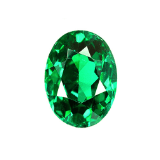
EMERALD
Emerald is the birthstone of May. It is a rare and magnificent green gemstone and is the most sought after member of the Beryl family of gemstones. It is also the anniversary stone for the 20th and 35th Anniversary
Colour: Emerald radiates the vivid green tones of spring. Some are more transparent than others and tend to have a high level of inclusion/ visible lines. The most prized Emerald are those that are grass green. It is rare to find a perfectly transparent and clear Emerald, unless it is very small.
Symbolism: Emerald has long been associated with fertility, rebirth and love. It was mined in Egypt as early as 330BC and was one of Cleopatra’s favourite gems. They were thought to bring the owner youth, good fortune and foresignt. The Ancient Romans even dedicated this stone to Venus – the goddess of love and beauty. Emerald comes for the Greek “smaragdos” which means green stone. In modern times, emerald signifies wisdom, growth and patience.
Source: Columbia has always been the most important source of the rare and precious Emerald, although it is also found in small numbers all over the world. The other significant sources are Zambia and Brazil.
Properties: An age old practice was to soak a rough emerald in colourless oil to improve its transparency and smoothen out its natural flaws. This practice continues to date. Always use only a mild soapy water to gently clean your emerald and carefully store it away from other jewellery pieces.

PEARL & ALEXANDRITE
June claims two birthstones, Pearl and Alexandrite.
Pearl has been a long symbol of purity and have been worn around the world for centuries.. The ancient Greeks believed that pearls were the hardened tears of Aphrodite, the goddess of love.
Alexandrite is another birthstone for June. It is a very rare and expensive gem that changes colour under different lighting.
Colour: Pearls have been widely popular over centuries because of their natural purity. They are typically round, smooth and lustrous but are also available in an array of colours, shapes and sizes.
The colours of Alexandrite is green and red with dramatic tinges of blue, orange or brown which are more visible in daylight or under fluorescent lighting. Under incandescent light, it turns into a soft shade of red with a hint of purple, orange or brown. This unique optical property makes it very valuable.
Symbolism: Alexandrite is a relatively modern gem and was identified in 1834, on the 16th birthday of Tsar Alexander II of Russia, after whom the stones was named.
Source: Natural pearls are formed in the shell of molluscs and are not as easy to find as we imagine. Most pearls that we see on jewellery is made from Cultured Pearls that are farmed in parts of Australia and Asia. The Japanese cultured pearls are especially popular. Brazil is the largest producer of Alexandrite. It is also found in Russia, India, Madagascar and Sri Lanka.
Properties: Pearls are delicate and easily chipped so they require special care and handling. Alexandrite requires no special care, but as with all gemstones it should be stored individually to protect it from scratches or chips.
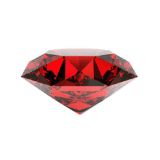
RUBY
The birthstone of July is Ruby.
Colour: Derived from the Latin word “Ruber”, it simply means Red. A Ruby is valued for its colour and quality and the finest colour is an almost pure red with a very faint undertone of blue. The rubies of Myanmar (Burma) are considered to be the most desirable and valued as they exhibit the ideal “pigeon blood” red. Rubies are also found in Thailand and East Africa with a slight purple overtone, which is caused by the rich iron deposits.
All natural rubies have imperfections in them, including colour impurities and inclusion of rutile needles also known as silk. These needles are often features that gemologists look for when sourcing natural ruby before they are heat treated to improve their appearance and intensity of colour.
Symbolism: Ruby represents love, health and wisdom and is said to have the power to end a lover’s dispute and rekindle desire. The Hindus regard Ruby to be the “King of Gems” and was believed to protect its wearer from evil. It is valued for its intense deep-red colour and signifies love and passion and protect its owners from all kinds of misfortune. Ruby is the most rare of the Corundum family of gemstones of which Saphhire is also a member.
Source: Myanmar (Burma) is the leading producer of the finest Rubies. Other sources include Sri Lanka, Thailand, Vietnam, Kenya, Tanzania, Cambodia, Afghanistan and India.
Properties: Rubies are one of the hardest gemstones and an owner is advised to clean the gemstone in an appropriate cleaning method.

PERIDOT & SPINEL
August is the latest month to claim two birthstones, Peridot and Spinel.
Symbolism: Peridot symbolizes strength and is believed to instill power and influence in the wearer, especially when set in gold. It is sometimes called the evening emerald for its light green colour. Spinel is available in a brilliant range of colors and is believed to protect the owner from harm and soothe away sadness.
Considered a powerful amulet, peridot was worn as a charm to ward off evil. It was used in jewellery and also adorned clothing.
Source: Peridot was originally mined only on an obscure island off the coast of Egypt and the mining was only done at night when its colour was visible against the rock among snake-infested lands. Peridot was rare and expensive until it was found in several U.S. states, China, Myanmar and Africa. Simplified mining has improved the availability of this unusual gem.
Properties: Peridot is vulnerable to hard blows and excessive scratching. It can be worn everyday, although with a little extra care.
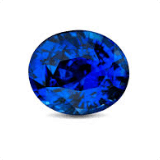
SAPPHIRE
Sapphire is the birthstone of September and is the accepted stone to gift for the 5th and 45th years of marriage.
Colour: This gemstone is available in almost every colour, except for red. The most intense velvety blue Sapphire comes Sri-Lanka, while Kashmiri Sapphires were traditionally most sought-after for their beautiful yellow, pinks and purples.
Symbolism: There are numerous legends associated with Sapphires. For instance, the Persians believed the earth rested on a giant sapphire. The Ancients believed that the Ten Commandments were written on a Sapphire Tablet. In the Middle Ages the gemstone was believed to protect you from evil and poisoning. It is also a favourite stone for priest and kings as it symbolized purity and wisdom. It also represents loyalty and trust. Marriage partners put great faith in the stone and believed that if the lusture dimmed, a spouse had been unfaithful.
Source: The best royal blue Sapphires are said to come from Sri-Lanka. Sapphires are also mined in Kashmir and other parts of India, China, Madagascar, Thailand, Myanmar, Nigeria, Kenya, Tanzania, China, the US, Australia and Africa.
Properties: Sapphires are durable and regular cleaning methods are suitable.
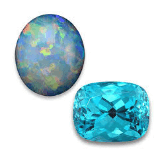
TOURMALINE & OPAL
October also has two birthstones Tourmaline and Opal.
Colour: Tourmaline is a popular gemstone because it is available in a variety of beautiful colours and has become a favorite among jewellery designers and gem collectors throughout the world. Available in such a wide variety of colours, it is ideally suited to nearly everyone’s taste. Tourmaline is often cut to show only one colour, so that it may resemble an emerald or a ruby, except for the watermelon tourmaline, which is cut into thick slices with a pink center, white ring and green edge.
Opal is an exceptional gemstone because each stone is has a one of a kind colour combination with flashes and patterns of different colours against a grey/white background. The intensity and variety of colours make opals more desirable, valuable and unique.
Symbolism: The name tourmaline is derived from the Singhalese word “tura mali”, meaning “stone with mixed colours”. An Egyptian legend has it that the tourmaline passed through a rainbow on its journey from the earth’s centre to the surface and in doing so, it assumed all the colours of the rainbow. It is not surprise that it is still referred to as “the gemstone of the rainbow”.
The word Opal comes from the Latin word “Opalus”, meaning “precious jewel” and is said to symbolize faithfulness and confidence. It has been a treasured gem since the Roman times and originally associated with luck in the Middle Ages and was a favourite of Queen Victoria. Opal necklaces are often worn to repel evil and to protect the eyesight.
Source: Tourmaline is a silicate mineral, found in many locations, including Brazil, Afghanistan, Africa and the US. Opals are primarily found in Australia, while Mexico and the US follow a close second with smaller numbers found in other locations as well.
Properties: Tourmaline is of medium strength, and can be cleaned and handled with usual care for fine jewellery. Opals should be worn with care and never exposed to heat or acid. It does not need to be stored in water or oil, as commonly believed.
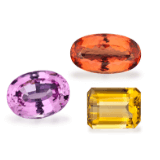
CITRINE & TOPAZ
November is also associated with two birthstones, Citrine and Topaz.
Colour: Topaz is most desired in its rich orange Imperial Topaz color. It is also found in a variety of rich colors like blue, pink and yellow.
Citrine is another warm yellow stone and is often thought to resemble topaz. Citrines vary in their range of yellow tones, and some are even of a deep orange (Madiera citrine).
Symbolism: The warm color of Citrine is said to be a gift from the sun and is believed to be a healing gemstone. It is thought to bring happiness, hope and relaxation. Topaz symbolizes love and affection and is believed to give the wearer increased strength, intellect and to promote a pleasant nature!
Source: Brazil is the top producer of Topaz. It can also be found in Mexico, Russia, parts of Europe, Australia, Africa, Europe and the US. Like topaz, citrines are largely found in Brazil.
Properties: Topaz is a hard gem. Most Topaz and Citrine stones are heat-treated to improve their colour or hue, the treatment is harmless and permanent. Conventional cleaning is appropriate for both Topaz and Citrine, but rough wear can potentially scratch their surface.

TANZANITE, TURQUOISE & ZIRCON
December birthdays have a claim to three gemstones; Zircon, Tanzanite and Turquoise. Each of these gemstones carries a unique blue tone making it a perfect birthstone for Minnesota’s frigid December winters. Zircon can be found in a variety of colors, but blue is the overwhelming favorite.
Colour: Turquoise is generally stable to light, but high heat can cause discoloration and breakage.
Symbolism: The tanzanite birthstone is often described as “velvety,” mostly because of its deep and saturated color, which ranges from a pure rich blue to violet, with the blue considered most valuable.
Source: Turquoise has been mined in the Nishapur district of Iran for more than 1,000 years. The prized even-colored, intense blue turquoise from this region is dubbed “robin’s egg blue,” “sky blue” and “Persian blue.” Trade professionals now use these terms to describe turquoise of this color – regardless of the source.
Properties: Turquoise is generally stable to light, but high heat can cause discoloration and breakage


